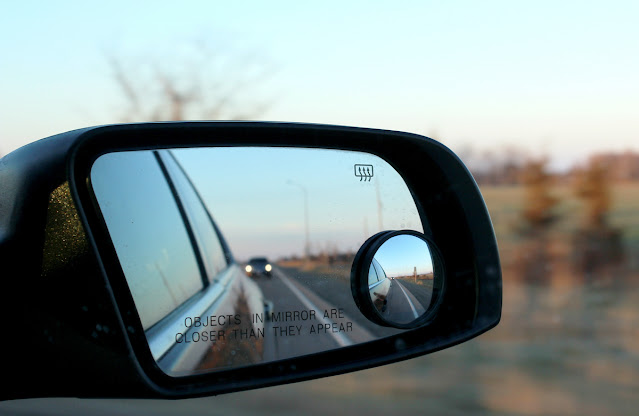Part of being a safe driver is integrating certain practices into your day-to-day driving habits. You should always use defensive driving, for example, and always use your turn signals when you're changing lanes. You should come to a complete stop at stop signs and always turn your headlights on from dusk until dawn. But when was the last time you checked your blind spot when maneuvering your car on the road? Toyota of Clermont is here to discuss blind spots, what they are, and why you need to check them.
What are blind spots and why are they dangerous?
A blind spot is just what it sounds like - it's basically an area around your car that you can't see because something is in the way. Every single vehicle has blind spots no matter which make or model you drive - it's just a part of driving, which is why it's important that you know how to locate and check them. Some common causes of blind spots include:
- The A-pillar on your car's windshield
- Headrests
- Too much cargo in the cargo area
- Your rearview mirror frame
- Other pillars throughout the vehicle
All of these areas can block your field of vision even when using mirrors, so in order to check them, you have to physically move. And it's critical that you check them - if you assume that there's not another car, bike, or pedestrian in your blind spot and you move your vehicle without checking, you could easily get into a car accident or hurt someone. A common blind spot accident that we see is people assuming that the lane next to them is empty, not checking the blind spot, and then changing lanes only to run into another vehicle.
How to check your blind spots: Clermont Toyota tips
It's easy to check your blind spot - you just physically move your head to look. However, be sure to do it quickly and without taking your hands off of the wheel; you want it to be as seamless as possible.
On top of that, there are ways to at least minimize your car's blind spots so they're easier to work with. Here are some quick Clermont Toyota tips:
- Never pack your cargo area or backseat to the ceiling - you should have a clear view out the back of your Clermont Toyota using your rearview mirror.
- Adjust all of your mirrors properly. Your rearview mirror should give you a clear field of vision out of the back of your car, while your side mirrors are aimed straight back and slightly inward (you should be able to see a bit of the side of your car). And keep in mind that if you adjust your seat at all, you'll probably need to also adjust your mirrors.
- Use the blind spot monitor in your new Toyota. Many of our newer cars at Toyota of Clermont have this technology; it beeps or chimes and flashes a light when you change lanes to alert you that something is in your blind spot. This alert can easily save you from getting into an accident.
- If your car doesn't have blind spot monitors, then you can always invest in blind spot mirrors. These small mirrors stick onto your Clermont Toyota's existing mirrors to give you a wider field of vision and to help get rid of your blind spots.
Have questions about blind spots or think you're ready to invest in a new Toyota with blind spot monitoring and other safety technology? Call Toyota of Clermont today at (352) 404-7000!

Comments
Post a Comment